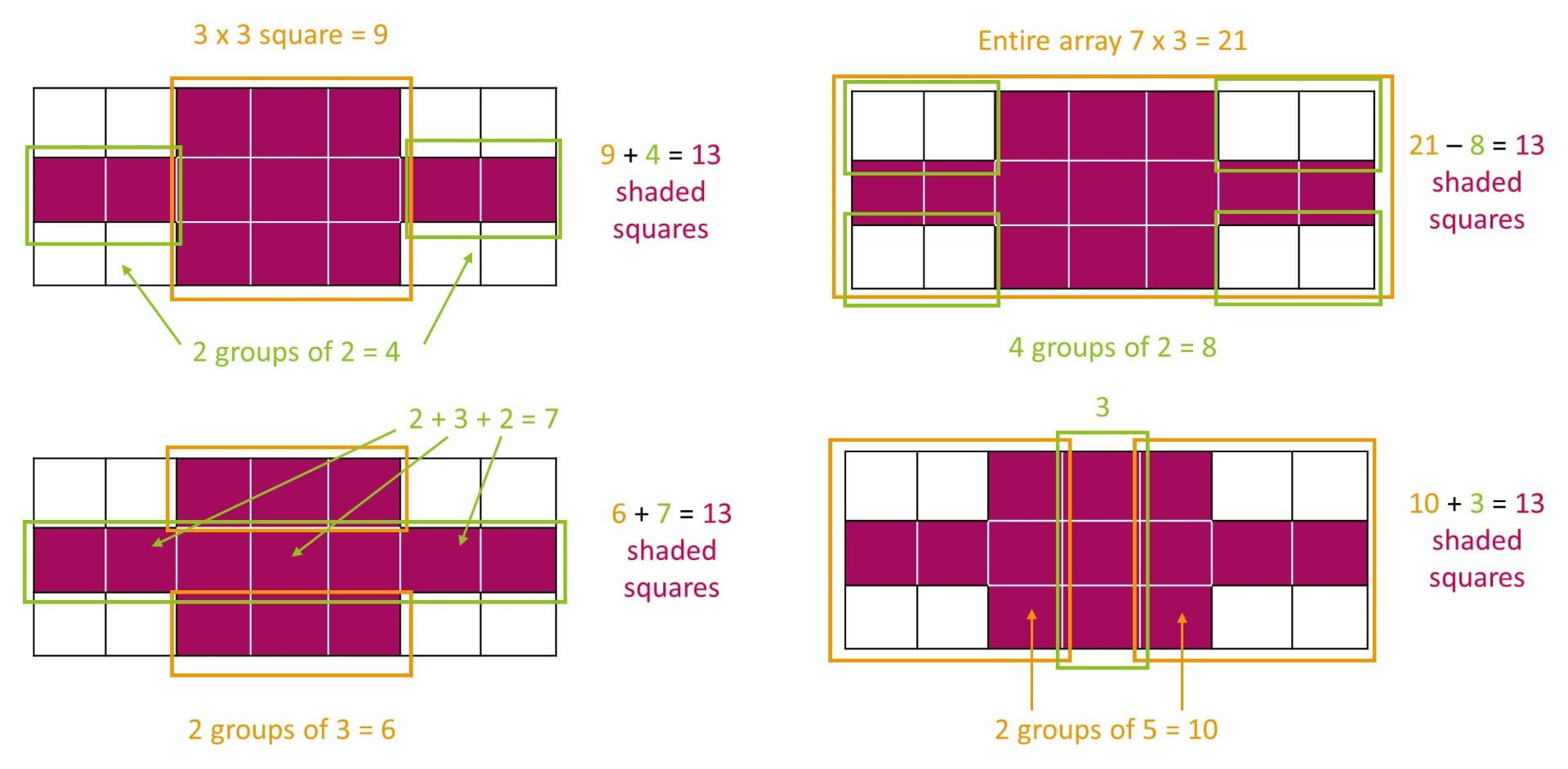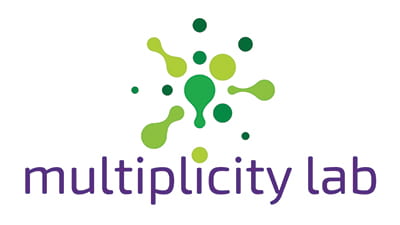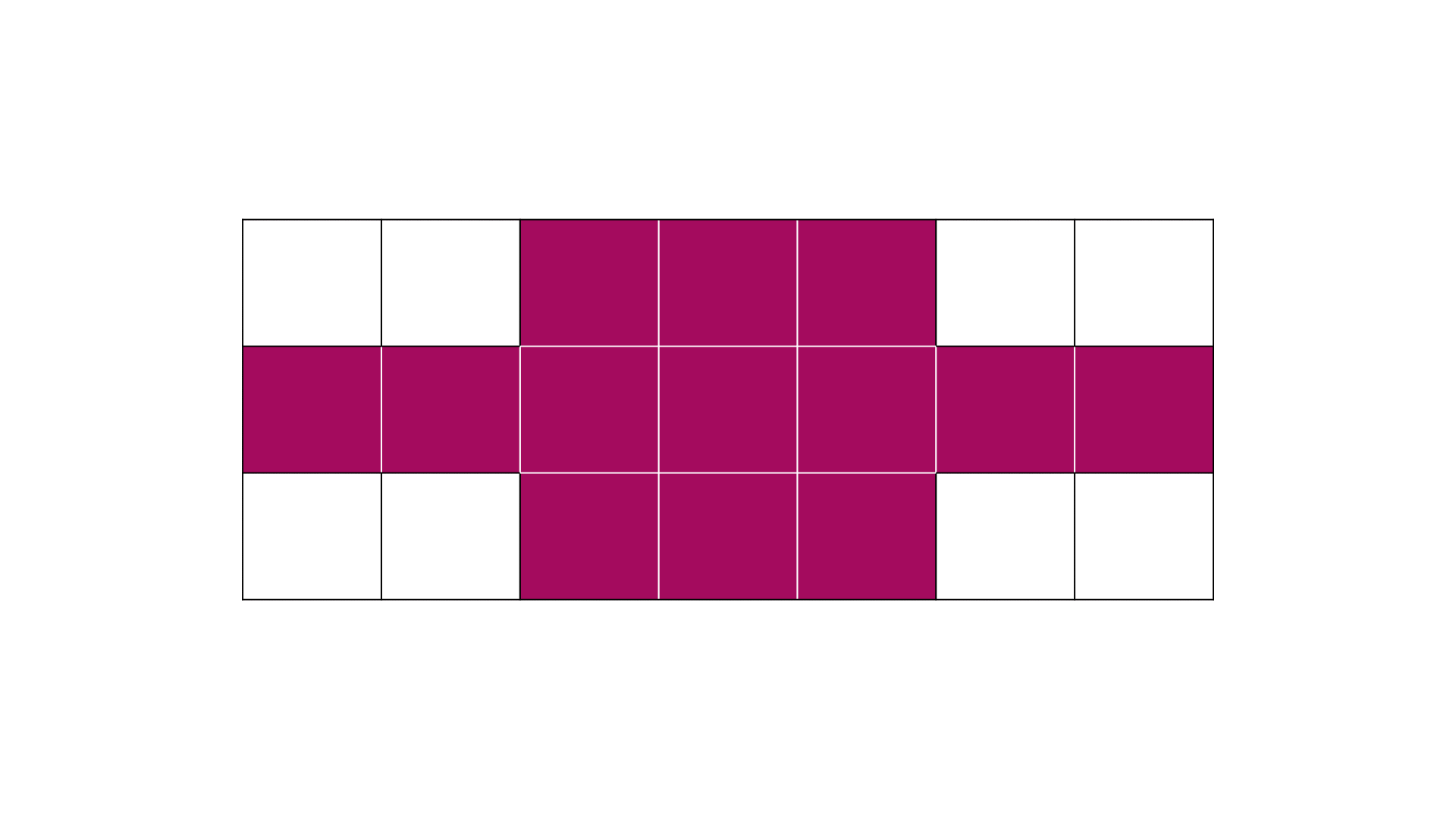Image of the Week: Tray an Array Talk
February 28, 2021Try an Array Talk
Today, I’m excited to share with you an image and routine that I think has enormous power – Array Talks. If you have every done a dot talk, you know just how to do an array talk. You show your students an array like one that is our Image of the Week and ask, How many squares are shaded? Our goal is to promote multiple ways of seeking, decomposing the shape and the number of squares, and recomposing them into a total. Try it yourself right now: How many squares are shaded? How do you see it?
Now let’s crack this activity open and see what’s possible. You might have seen the number of squares in one of these ways:

These are just a few of the possibilities, and you may have seen the 13 shaded squares differently. Notice that they are many, many ways to see the total number of shared squares, including ways that use the unshaded squares and the whole array as tools. Array talks can focus on counting, subitizing, and composing and decomposing number. They can involve adding one, finding differences, and thinking in equal groups. And they also let us think about equivalence. Looking at the two strategies on top, for instance, we can use the images as evidence that 9 + 4 = 21 – 8.
The structure of the array is a key tool, and using it is a mathematical practice in itself. The rows and columns encourage students to think in equal groups, whether they multiply or skip count. Symmetry can also be used, when students find the number of shaded (or unshaded) squares on half or a quarter of the image and using doubling or multiplying to find the total.
However you try these, remember that how you and students record thinking is a form of mathematical modeling and supports other students in seeing in new ways. We’ve used color here to help you see the different ways of thinking about the shaded squares. We’ve also used a combination of number sentences, words, and arrows to make our thinking clear. When you do an array talk, record what students are saying to show them how their thinking can be represented symbolically and to give other students access to the ideas. If you teach older students, array talks can be used as a foundation for learning how to use symbols to represent the order of multi-step tasks using grouping symbols and order of operations.
We have dozens of these array talks available, with more on the way. Some have a small number of shaded squares so they are countable by young children, while others are far larger, encouraging students to think multiplicatively and find other efficiencies.
And don’t forget to tell us what you think! We want to make multiplicity lab useful in classrooms around the corner and around the globe. Send us your feedback – we’d love to hear from you!
To multiplicity, cheers!
Jen Munson and the multiplicity lab group
Read the Archive
Get the Image of the Week
Each week we bring you a new image and activity you can do with your students tomorrow, and we spotlight a feature of the mathematical work that we think is important for students’ learning and your teaching.
Stay connected and see what's new.

